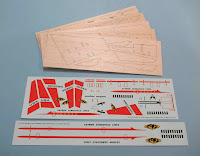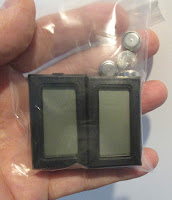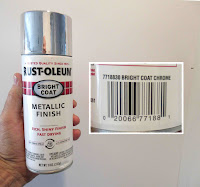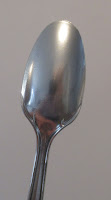I did leave the tabs on the Part "R" wing tip piece. This joint needs to be strong if there were a hard landing.
The problem is -
The tab is short when set into the outside wing notch. That would lead to some difficult fills.
I slightly deepened the low edges outside the tab.
Note: This was a pre-production kit. Changes might have been made before the model went into distribution.
The notch on the wing end was deepened with a file. Go easy, file and check the fit, then file some more.
Earlier I mentioned not sanding the center tab on the "R" wing tip. I wanted it left long for this fitting.
After filing down the sides, the R piece tab now extends slightly above the flat face of the wing.
The R piece can be glued onto the outside of the wings.
After the glue dries, sand the extended tab down to the surface face of the wing.




















































